By Alex Trukan
Brazil has been always known for its creative and unpredictable attacking play. The type of the players in the team naturally fit into more flexible tactics with less structure and patterns. This is due to flair and freedom Brazilian players possess. Attacking flexibility with this type of players is harder to defend against and more unpredictable. The downside of this approach is out of possession phase when a lot of the players might be caught out of positions and less organised than required. This article will present some of the movements occurring off the ball in Brazilian national team attacking play.
Building up from the back phase is usually more structured than attacking on the opposition’s half. However, even in this phase being more flexible might bring benefits and create options to play forwards. As it can be seen below, one of the centre midfielders comes into wide area and drags main opposition defensive midfielder (Mascherano) out of the centre. Another centre midfielder comes towards the ball and is followed by opposition centre mid what again creates spaces in the centre. Third centre midfielder drops into pocket of spaces looking to receive and play forwards.
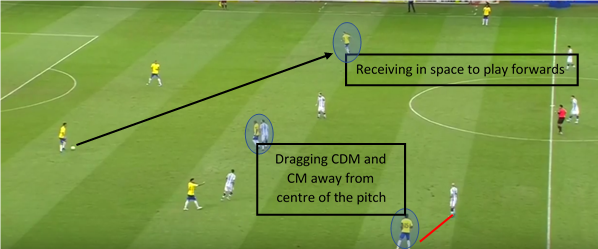
As the play progresses into opposition half there is even more movements off the ball and rotation between positions. Left winger coming inside to receive the ball in the middle leaves opposition right back out of balance creating an option for attacking left back to overlap. Movement of left winger also creates an overload in the centre and provides an option to combine with centre midfielders.
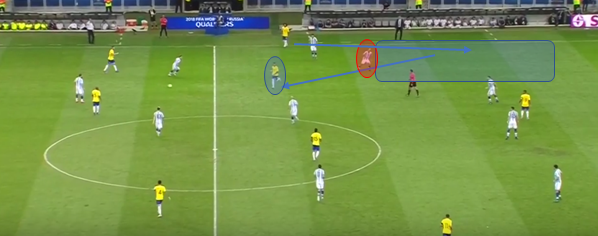
Similarly on the right wing, we can see that right winger chooses to come in towards centre midfielder on the ball and literally takes over the ball from him. That forces left back to guess whether to follow as he will ‘crush’ into centre midfielders.
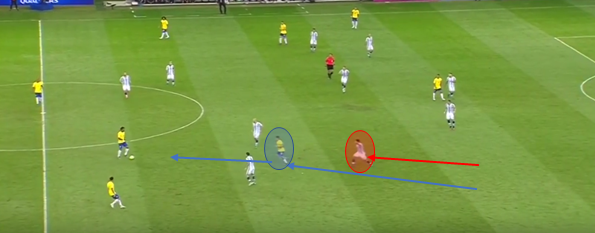
Wingers can come in more centrally as well and try to combine with opposite winger. As it can be seen below, right winger has almost come in to the left side of the pitch looking for gaps and pockets to receive in. With left winger, striker and right winger coming in, there is a local overload in this area of the pitch. After this kind of movement the first goal for Brazil was scored in the match against Argentina in the recent WC 2018 Qualifiers.
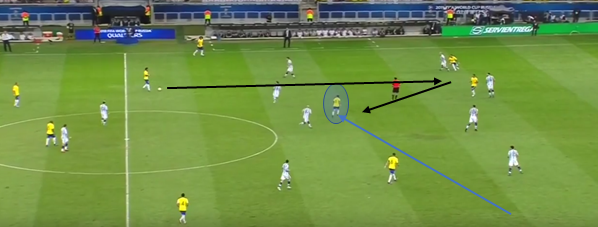
Finally, movement that emerged quite often was number 9 coming deeper to receive what has left spaces in behind for central midfielders to make runs into. This however was usually exploited by a pass to number 9 rather than a ball in behind the opposition’s back line.
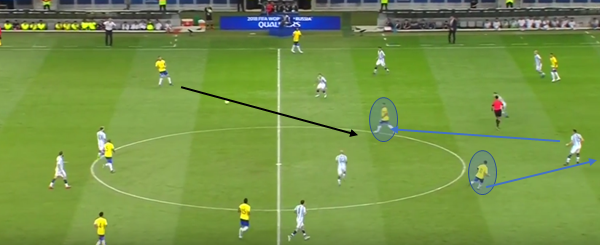
To be able to play within a flexible attacking approach, players should experience different positions from early ages. This will ensure they have understanding how to play the game, not just how to play specific position. It will also develop their variety of technical skills.
By Alex Trukan, Development Coach, Nottingham Forest
@AlexTrukan


